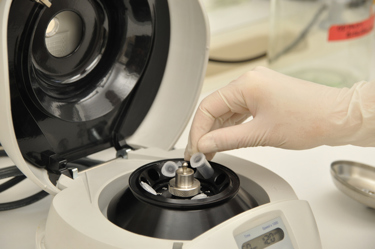New Instrumentation Expands Sediment Velocity AUC's Utility

Purified adeno-associated viruses (AAVs) are prepared as a variety capsid species that must be characterized and quantified to ensure safety and efficacy. One common method for characterizing AAVs is size exclusion chromatography (SEC) coupled with multi-angle light scattering (MALS), although this technique struggles with separating size distribution. The other is analytical ultracentrifugation (AUC), which can be done using sedimentation velocity (SV-AUC) or cesium chloride (CsCl) density gradient, a technique that separates species based on differences in particle density.
However, multi-wavelength SV-AUC analysis of AAV preparations using the Optima AUC enables precise identification and quantification of different AAV fill states. It also allows users to calculate the relative amount of single-strand DNA genome to capsid in each resolvable species.
Get unlimited access to:
Enter your credentials below to log in. Not yet a member of Bioprocess Online? Subscribe today.
